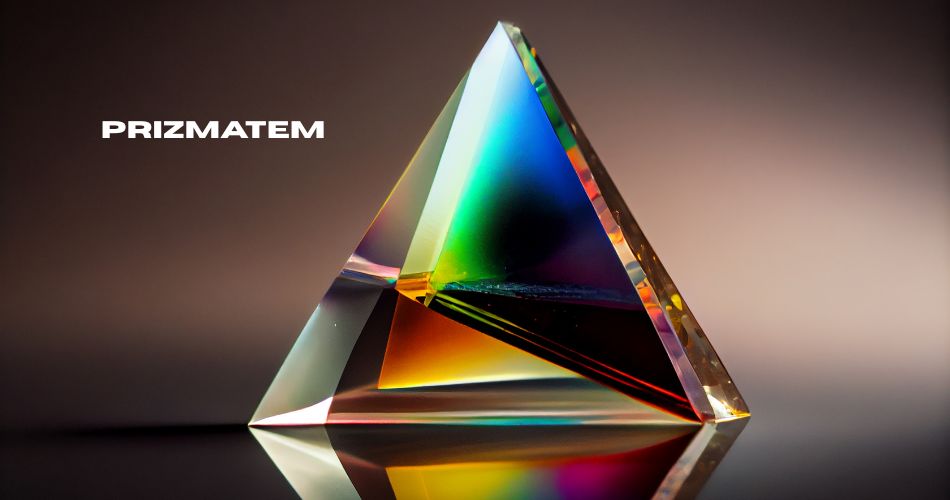In an era dominated by high-definition screens, virtual reality headsets, and augmented overlays, there is a new contender rising on the horizon—Prizmatem, a cutting-edge innovation that brings holographic display technology to the mainstream. Prizmatem isn’t just an upgrade to traditional visual tools; it is an entirely new way of interacting with digital information. Through the marriage of prism-based light manipulation and advanced computing intelligence, Prizmatem introduces a display solution that projects 3D-like visuals into open space, eliminating the need for screens or goggles. Imagine giving a presentation where your data floats in the air, or learning biology with a life-sized hologram of a human heart pulsating in front of you. That’s not science fiction anymore. That’s Prizmatem.
The Meaning Behind the Name Prizmatem
The name Prizmatem is symbolic of the technology’s function and philosophy. Derived from “prism”—a transparent object that disperses light into a spectrum—and “system,” the name combines the essence of light manipulation with systematic intelligence. This name reflects its core technology: the controlled division and recombination of light into structured visual forms. Just like a prism reveals hidden colors in a beam of light, Prizmatem reveals new dimensions within digital content, inviting users into a richer, deeper, and more meaningful visual world.
Origins and Development Timeline of Prizmatem
The story of Prizmatem began in the labs of an international research group composed of physicists, optics engineers, software developers, and digital artists. The initial goal was to overcome the flatness and disconnection of current visual mediums by building a system that projects interactive holograms into real-world spaces. It took nearly five years of experimentation, material research, and algorithmic refinement before a prototype was ready. Funding came from both government grants and private investors who saw the vision of immersive content as the next frontier. What started as a passion project among a few visionaries has now evolved into a commercial product with global distribution and a growing user base spanning various industries.
Breaking Down the Technology Behind Prizmatem
At the heart of Prizmatem lies a unique combination of optics, light physics, artificial intelligence, and motion sensing. Instead of projecting images onto a wall or screen, Prizmatem disperses beams of light through layers of microscopic prisms that bend and shape the light into detailed floating visuals. The AI component enhances this experience by analyzing user position, adjusting brightness, recognizing gestures, and even responding to spoken commands. Additionally, it utilizes spatial computing to assess room dimensions and furniture layout so that the visuals are always projected in the right place and orientation, no matter the environment. The result is an experience that feels incredibly fluid, organic, and almost magical.
Interactivity and Intelligence: Going Beyond Just a Display
What makes Prizmatem stand out even further is its high level of interactivity. Users don’t have to rely on a touchscreen, mouse, or remote. Instead, they can simply move their hands or speak commands to interact with the content. This is made possible through embedded infrared sensors and directional microphones that map movements and detect audio cues in real-time. Want to spin a 3D globe? Wave your hand. Want to enlarge a molecule structure? Say “Zoom in.” The AI even learns user preferences over time, offering smarter suggestions and customizing content delivery based on habits and history.
Design and Build: Compact, Sleek, and Portable
Despite being packed with futuristic features, Prizmatem boasts a compact and modern design. The main unit is about the size of a small speaker and can easily be carried in a backpack. Its sleek aluminum body and minimalist aesthetic make it a stylish addition to homes, offices, or studios. The unit comes with a wireless charging dock, built-in speakers, and an LED touch ring for manual input. Because it doesn’t need a screen or wall to function, you can literally set it on any flat surface and begin experiencing content in seconds.
Prizmatem in the Field of Education
In the classroom, Prizmatem is transforming the way students learn and teachers teach. With this device, concepts that are typically abstract or theoretical come to life. A chemistry teacher can show atomic reactions in real time. A geography class can explore the planet’s layers in floating 3D. History lessons can feature animated historical reenactments right on students’ desks. This hands-on engagement drastically increases attention spans and comprehension levels. It also helps bridge the gap for visual and kinesthetic learners who struggle with traditional text-based learning.
Revolutionizing Gaming and Entertainment
Gamers and content creators are embracing Prizmatem for its immersive capabilities. Instead of staring at a monitor or wearing a headset, users can now interact with their favorite characters and environments in open space. It redefines multiplayer experiences by allowing multiple users to see and interact with the same holographic objects from different angles. Developers are already building exclusive games for Prizmatem that take advantage of its 3D layering, real-world physics simulation, and touchless control system. Even movies and videos are enhanced with depth, turning simple scenes into theatrical moments.
Corporate Use: Presentations and Collaboration Made Better
Business professionals are quickly realizing how powerful Prizmatem can be for communication. Whether you’re pitching a new product, explaining financial data, or brainstorming with a team, Prizmatem allows for a presentation style that’s both engaging and persuasive. Charts, graphs, and models float in the air, allowing everyone to examine, move, and annotate in real time. With remote sync capabilities, it also supports long-distance meetings where participants from different locations can interact with the same 3D visuals as if they were in the same room.
Healthcare and Medical Training Applications
In the healthcare sector, Prizmatem is proving invaluable for training and diagnosis. Medical students can dissect virtual organs without a scalpel. Surgeons can rehearse procedures with dynamic, layered simulations. Therapists are using it for guided exercises with patients, projecting movement models and feedback loops in midair. The device is also being used in diagnostics, where 3D scans of organs can be examined layer by layer for deeper insights into a patient’s condition. These applications are not only increasing safety but also improving accuracy and confidence.
Art, Design, and Creative Storytelling with Prizmatem
Artists and designers are using Prizmatem as a medium for expression and prototyping. 3D artists can sculpt digital clay in the air. Interior designers can project layouts and color schemes in real rooms before committing to physical changes. Filmmakers are starting to storyboard scenes in Prizmatem, using interactive characters and real-time effects. The freedom to visualize and alter ideas in real space without physical materials is unlocking a new level of creativity and efficiency.
Sustainability and Eco-Conscious Design
Beyond its technological prowess, Prizmatem is also built with the environment in mind. It uses recyclable materials and consumes up to 60% less energy than traditional screens. There is no need for replacement bulbs, no wasteful peripherals, and its minimal heat output reduces air conditioning demands in workspaces. For organizations looking to reduce their carbon footprint while staying ahead of the innovation curve, Prizmatem offers an ideal solution.
Current Limitations and Areas for Growth
As with any emerging technology, Prizmatem isn’t perfect. Bright sunlight or over-lit environments can affect the visibility of holograms. Content libraries are still growing, and support for third-party applications is currently limited to beta partners. Also, while the device is compact, the need for open space around it may limit its use in crowded or cluttered environments. However, these challenges are being rapidly addressed. The developers are already working on sunlight-optimized lenses and new partnerships with app creators and global distributors.
The Road Ahead: What’s Next for Prizmatem
The future of Prizmatem looks incredibly bright. The company is planning to release a Pro version with even higher resolution, larger projection size, and improved voice recognition. There’s also talk of an educational edition tailored specifically for schools, complete with curriculum-linked content and teacher controls. More importantly, Prizmatem’s developer community is expanding, ensuring a growing library of content ranging from educational modules to augmented reality games. With 5G and edge computing integration on the horizon, Prizmatem is set to become even faster, smarter, and more connected.
Conclusion
In a time where screens dominate our attention and virtual experiences often require heavy hardware, Prizmatem emerges as a beacon of simplicity, elegance, and innovation. It removes the physical boundaries of traditional displays and invites us into a world where digital content is no longer confined to devices—it lives and breathes in our space. Whether for learning, creating, entertaining, or communicating, Prizmatem offers a future where information is more intuitive, engaging, and alive. As this technology continues to evolve and become more accessible, it’s only a matter of time before Prizmatem—or something inspired by it—becomes a staple in classrooms, homes, offices, and everywhere in between.
Discover More Engaging Reads:
- Pedro Vaz Paulo: Unlocking Talent Potential in the Modern Workplace
- Insights from Tatasec.org: A Deep Dive into Cybersecurity Awareness
- Daryn Allene Wood: How She Changed Lives with Heart and Talent
- Elida Schoology: Transforming Education Through Digital Learning
- Freewayget .com: A Complete Guide to the Digital Marketplace Platform



